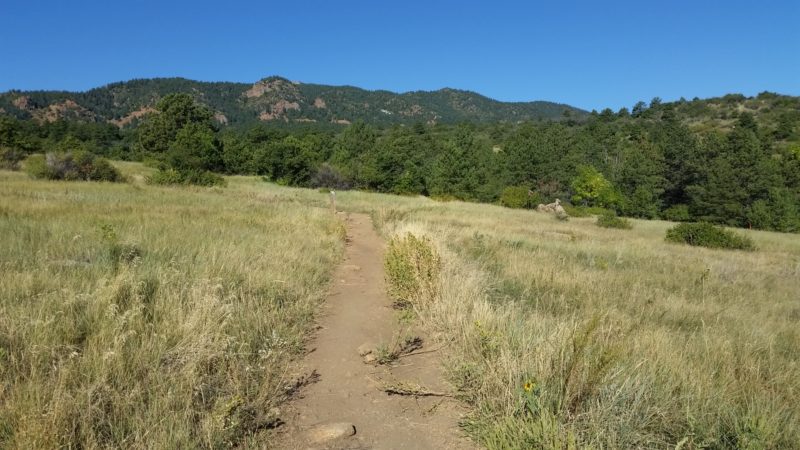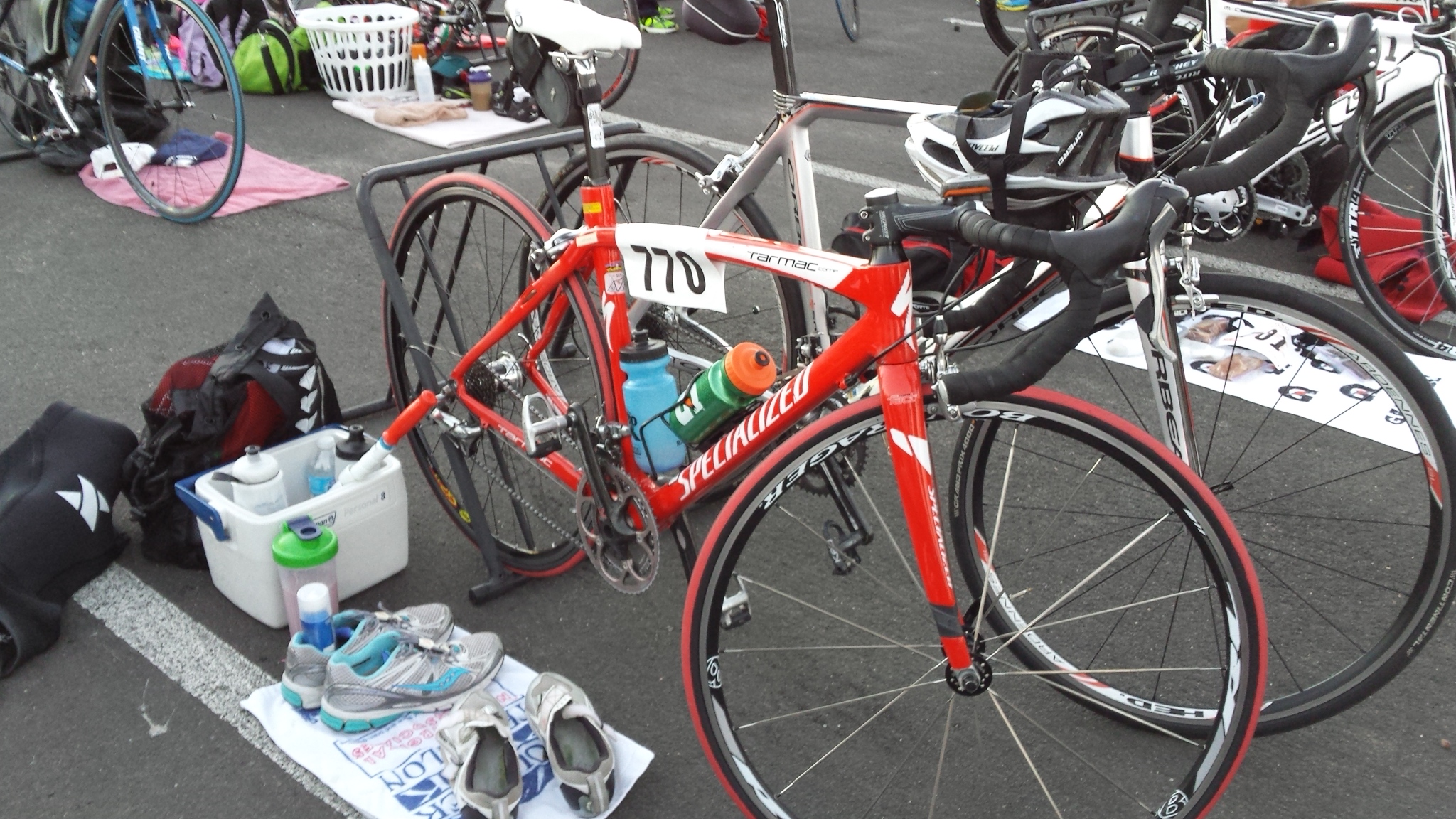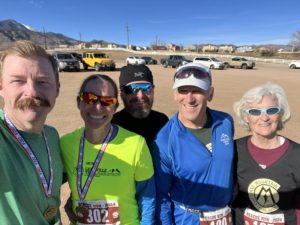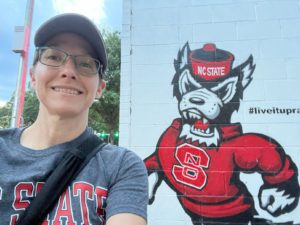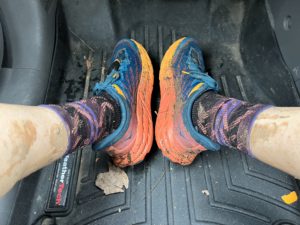Before we go down the path of understanding our training zones, we also need to have a basic understanding of energy systems and basic physiology. I will keep it simple, as the point is to understand the concepts.
We need energy first and foremost to stay alive. But if you are reading this, chances are you are an endurance athlete or interested in becoming one, which makes energy production even more relevant! So let’s learn how our body makes the energy it needs.
Energy Systems
To start, I need to define ATP or Adenosine triphosphate. This is the chemical that provides us energy.
When the outermost phosphate (phosphate chain is seen on the left) is removed when ATP reacts with water and a specific enzyme, quite a bit of energy is released and ADP (adenosine diphosphate) is produced. This chemical energy released is what keeps us functioning. We want to be good at producing ATP for the energy it provides.
There are three main ways of getting that energy producing ATP.
1) ATP/CP
CP is Creatine phosphate (or phosphocreatine). Once one ATP molecule gives up a phosphate, it is now ADP. Creatine phosphate is then able to give up its phosphate to the ADP, so that a new molecule of ATP is produced. But there is a limited supply of ATP to be used in this process, so it is typically only involved in efforts of 10 seconds or less. (How fast does Usain Bolt run the 100m?) No oxygen is involved in this reaction so we call it an anaerobic system (without oxygen).
2) Glycolysis
If the root of this word looks familiar, it’s because glucose is involved. In this energy production system or “pathway” the glucose is converted to pyruvate plus two ATP molecules (and some other stuff, but don’t worry about that now.) But looky there. Yes, two ATP molecules! (two is better than one!)
But what also happens when no oxygen is around is that pyruvate is converted to lactate. Lactate + H+ = lactic acid. (H+ is a proton, or simply a hydrogen ion – a hydrogen atom missing its electron). We’ll talk more about lactate later in this series.
This energy system is considered intermediate, but still relatively short-lived. It takes a little longer to access than the ATP/CP system, but you can’t use it for very long. It’s typically the dominant system in events lasting 30 seconds to two minutes. This is also an anaerobic energy system.
3) Oxidative Phosphorylation
My goodness, this sounds like an organic chemistry class! For those who stayed away from that part of campus while in college, no worries, you don’t need all the details. But for those who want some definitions, oxidation is just a process of losing an electron, and oxygen is actually a really good acceptor of electrons. So oxygen “steals” an electron from a molecule to “oxidize” it. Phosphorylation is simply the addition of a phosphoryl group (PO3).
This third energy is a “long-term” system. It allows us to create quite a bit of energy. It starts with glucose that is once again converted to pyruvate. But in this case, oxygen IS available, so it is an aerobic system.
The pyruvate gets converted to acetyl coenzyme A, and then through a process called the Krebs Cycle and the Electron Transport Chain, we get up to 36, that’s right, 36, ATP molecules!! By golly if I want energy, that’s the way to do it. Since we can provide oxygen to our body by inhaling, we can deliver quite a bit. Some people just happen to be more efficient at this, and we’ll talk about that next week.
Summary of Energy Systems:
ATP/CP = very short duration, anaerobic, 1 ATP molecule produced
Glycolysis = short duration, anaerobic, 2 ATP molecules produced
Oxidative Phosphorylation = long duration, aerobic, >30 ATP molecules produced!
One key point to remember is that these energy systems are not exclusive, meaning they can all take place at the same time, just depending on the duration of your energy needs, one will be more dominant than the other.
Because endurance sports last longer than 2 minutes, the primary energy system we care about is the long term, oxidative phosphorylation. But we can’t ignore the others since they are going on at the same time. A long race is primarily aerobic, but what happens when you need to power up a hill, or accelerate very quickly to stay on someone’s wheel?
Basic Physiology
Now on to the brief physiology lesson. You probably know we are all made of cells. And each cell has these “powerhouses” called mitochondria. Turns out that the only place oxidative phosphorylation (ATP creation with oxygen) can take place is in these mitochondria. Typically the more mitochondria endurance athletes have in their skeletal muscles (mitochondrial density), the better.
So now let’s talk about getting oxygen to those cells. To do this we’ve got to talk a little about cardiopulmonary anatomy. It’s the heart and lungs, baby!
Heart of the Matter
The heart is the muscle that pumps blood. I’m pretty sure you knew that, but for thoroughness I had to state it. The variables we talk about regarding the heart are stroke volume and stroke rate. How much blood is being pumped per beat, and how many beats are taking place per unit of time. Most often that unit of time is a minutes, and we have BPM or beats per minute.
These variables are important because it is the blood that delivers the oxygen to our cells. Oxygen is picked up by the blood in the lungs. The carriers of oxygen in the blood are red blood cells, and in the red blood cells are molecules of hemoglobin. The oxygen attaches itself to the hemoglobin and off they go!
The whole transport system of oxygen from the lungs to the blood, and then from the blood to the muscles, is based on partial pressures. In simple terms, things like to travel from a higher pressure to a lower pressure, so the partial pressures of O2 favor oxygen transferring to oxygen depleted blood in the lungs, and then from oxygen-enriched blood to the muscle cells.
Now that the cells have an oxygen supply, those powerhouse mitochondria can make ATP, or energy! Yes! That’s what we want. And the more red blood cells we have, the greater amount of hemoglobin, so we can deliver more oxygen to our cells.
[Side note: Living at altitude, like I do, causes our bodies to produce more red blood cells because there are fewer oxygen molecules up here at lower atmospheric pressure (same ratio of oxygen to nitrogen and other gases, just less molecules to go around). Some endurance athletes will have specific training at altitude to get these natural adaptations. And we know that unfortunately some athletes have used unethical methods to manipulate the amount of red blood cells in their bodies.]
How do we make our bodies more efficient in creating energy so we can go faster or go longer? We train with specific purpose!
Why We Train
Let’s look at some of the physiological adaptations that take place when we participate in endurance training.
1) Increase total blood volume. The body is pretty complex, and I’m trying to write this in simple terms (otherwise it’d be a text book). But regular endurance training increases certain hormones that regulate blood volume (the fluid or plasma portion). But having more blood means more oxygen can get delivered to cells. (There are other benefits, too, but they are “beyond the scope of this article.”)
2) More efficient heart muscle. It’s a good thing to monitor your resting heart rate for a few different reasons. But you’ll know if your heart is getting more efficient when it doesn’t need to beat as often to keep you functioning at rest. You’ll also find over time (a gauge of fitness) if training is applied properly, you will be able to go faster at the same heart rate.
3) Increase stroke volume / cardiac output (amount of blood our heart pumps in one minute). If we can pump more blood at the same heart rate, our muscles get more oxygen.
4) Improved lung capacity. Let’s get those lungs more efficient and allow them to take in more oxygen! Endurance exercise works your lungs a bit harder than just sitting around so they adapt.
5) Increase mitochondrial density. Increase the number of locations that we can oxidatively create ATP in the cells. Sounds like a good plan to me! Increasing mitochondrial density also increases the use of Free Fatty Acids (fat) instead of glucose and glycogen, and will also decrease lactate production. (Improves the oxidative phosphorylation system and your body has less reliance on glycolysis.)
So Now What?
I hope you now have a better basic understanding of how our body produces the energy it needs when we swim, bike, and/or run (or as you sit there and read this post.) Our training needs to stress these systems to get the adaptations we want for our chosen events.
While I was planning on talking about “zone 1” today, I think I will leave that for next week. See you then!

